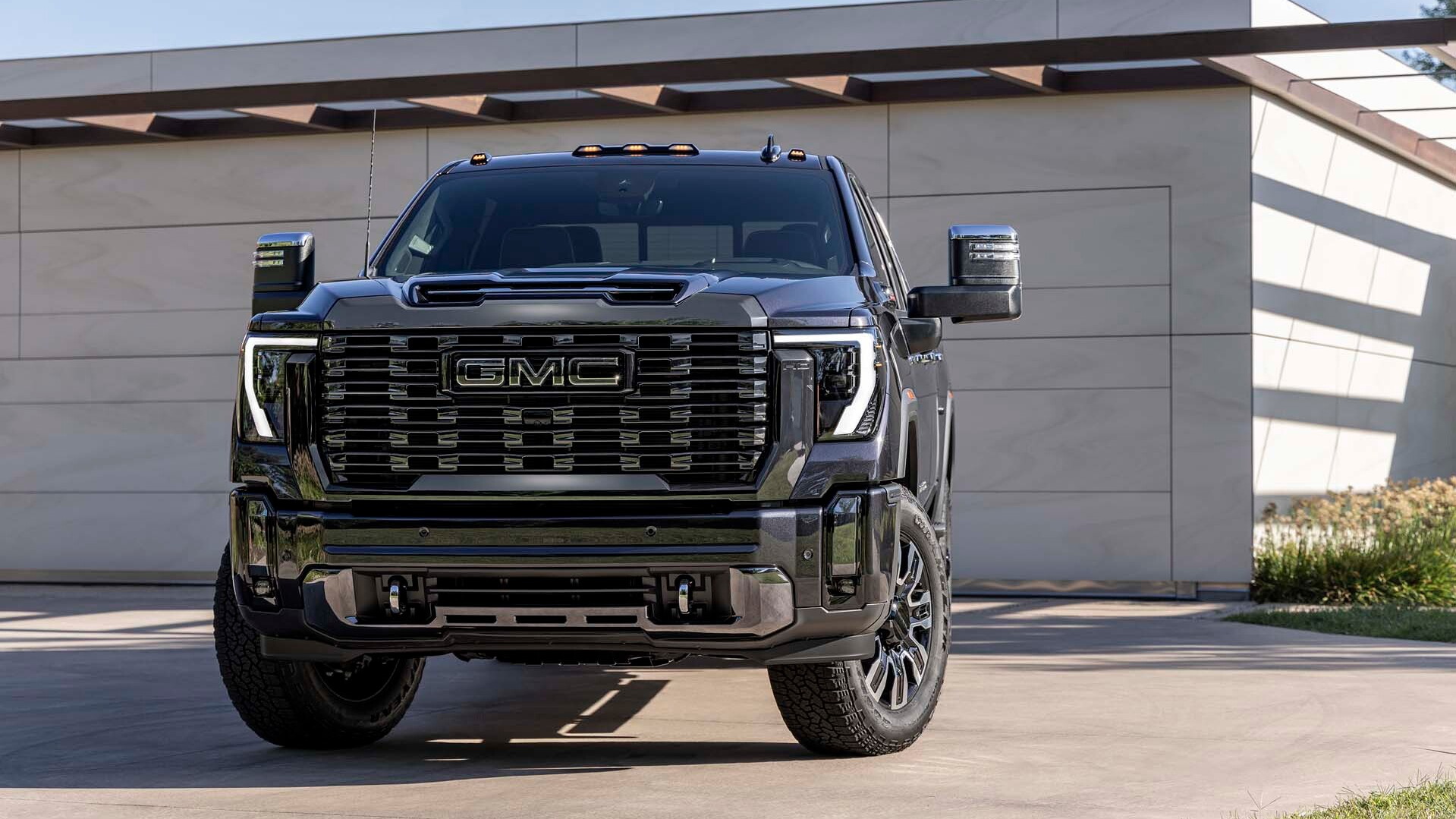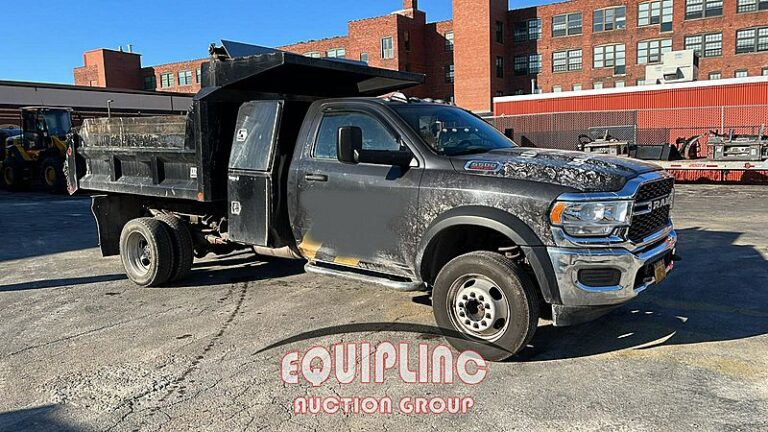GMC Truck Cap Size: The Ultimate Guide to Perfect Fit and Functionality
GMC Truck Cap Size: The Ultimate Guide to Perfect Fit and Functionality cars.truckstrend.com
A truck cap, also known as a camper shell, topper, or truck shell, is an invaluable accessory for any pickup truck owner. It transforms the open bed of a truck into a secure, weather-protected, and often more organized cargo space. For GMC truck owners, investing in a cap means unlocking new levels of utility, whether for work, recreation, or everyday hauling. However, the true benefit of a truck cap hinges entirely on one critical factor: its size.
Selecting the correct GMC truck cap size is not merely about aesthetics; it’s fundamental to its functionality, security, and longevity. An ill-fitting cap can lead to a host of problems, including water leaks that damage cargo, insecure attachment points that pose a safety risk, compromised vehicle aerodynamics, and an unsightly appearance that detracts from your truck’s overall look. This comprehensive guide will delve into every aspect of GMC truck cap sizing, ensuring you have all the information needed to make an informed decision and achieve the perfect fit for your beloved GMC.
GMC Truck Cap Size: The Ultimate Guide to Perfect Fit and Functionality
Understanding GMC Truck Bed Dimensions: The Foundation of Fit
The journey to finding the perfect truck cap begins with a thorough understanding of your GMC truck’s bed dimensions. Unlike a one-size-fits-all accessory, truck caps are highly specific to the make, model, and even year of your vehicle. GMC, like other truck manufacturers, produces a variety of truck models, each with distinct bed lengths and widths designed to cater to different consumer needs.
The primary dimensions that dictate truck cap compatibility are the bed’s length and width.
- Bed Length: This is the most crucial measurement. GMC offers various bed lengths across its truck lineup, commonly categorized as "short bed," "standard bed," and "long bed." For instance, a GMC Sierra 1500 might be available with a short bed (around 5’8"), a standard bed (around 6’6"), or a long bed (around 8′). Heavy-duty trucks like the Sierra 2500HD or 3500HD also come with standard and long bed options, often with slightly different measurements than their light-duty counterparts. The GMC Canyon, a mid-size truck, will have even shorter bed options.
- Bed Width: While bed lengths are more varied, bed widths are also critical. Caps are designed to sit snugly on the truck’s bed rails. The width measurement must account for the exterior width of the bed rails, as well as the interior width if the cap has an internal frame that sits flush with the bed floor.
It’s vital to remember that even within the same model, bed dimensions can subtly change with different model years due to redesigns or platform updates. For example, a 2018 GMC Sierra 1500 might have slightly different bed contours or rail dimensions compared to a 2024 model. This emphasizes the need for precise measurements and verification against manufacturer specifications.

Key Measurements for a Perfect Fit: How to Measure Your GMC Truck Bed
Accurate measurement is paramount to selecting a truck cap that fits like a glove. Don’t rely solely on advertised bed lengths, as small discrepancies can lead to major fitting issues. Here’s how to properly measure your GMC truck bed:
-
Bed Length (Inside):
- Open your tailgate.
- Measure from the inside of the bulkhead (the wall closest to the cab) to the inside edge of the tailgate.
- Measure along the bed floor or just above it. Take the measurement in inches and convert to feet and inches for clarity (e.g., 69.3 inches is approximately 5 feet 9 inches).
- This measurement is critical for the base length of the cap.
-
Bed Width (Exterior Rail-to-Rail):
- Measure the width of your truck bed from the outside edge of one bed rail to the outside edge of the opposite bed rail.
- Take this measurement at both the front (near the cab) and the rear (near the tailgate), as beds can sometimes taper slightly. Use the widest measurement.
- This measurement determines the cap’s overall width where it rests on your bed rails.
-
Bed Width (Interior):
- Measure the width between the inside edges of your bed rails. This is less critical for the cap’s overall fit on the rails, but important if the cap has internal bracing or features that need to clear the bed walls.
-
Cab Height (for Flush Fit):
- If you desire a "cab-height" or "flush mount" cap, measure the height from the top of your bed rail to the highest point of your truck’s cab (usually the roof or the top of the third brake light housing). This helps ensure the cap’s roofline aligns aesthetically with your cab.
Important Considerations During Measurement:
- Bed Liners: If you have an aftermarket drop-in bed liner, it can slightly alter the internal dimensions and bed rail thickness. It’s often recommended to remove drop-in liners before cap installation or at least account for their thickness. Spray-in liners typically do not pose an issue.
- Factory Bed Rail Caps: Many GMC trucks come with plastic bed rail caps from the factory. These are usually integrated into the design, and truck caps are designed to fit over them.
- Utility Tracks: Some GMC models feature utility track systems (like the GMC Cargo Management System) along the bed rails. Ensure any chosen cap design is compatible with these systems, or that they won’t interfere with the cap’s clamping mechanism.
- Tailgate Design: Modern tailgates, especially those with multi-pro or multi-flex features, have unique shapes. Truck caps are designed with specific tailgate cutouts and seals to accommodate these. Ensure the cap manufacturer specifies compatibility with your tailgate type.
Types of GMC Truck Caps and Their Sizing Implications
Beyond the fundamental length and width, the type of truck cap you choose also has sizing implications, particularly regarding height and overall design:
- Flush Mount / Cab Height Caps: These caps are designed to sit flush with the top of your GMC’s cab, creating a sleek, integrated look. They are ideal for users who prioritize aesthetics and light-duty cargo protection, where maximum internal height isn’t a primary concern. Sizing here is critical for matching the cab’s height precisely.
- Mid-Rise Caps: Offering a compromise between aesthetics and utility, mid-rise caps are typically 2-6 inches taller than the truck’s cab. This extra height provides significantly more cargo volume without making the cap feel disproportionately large. They are popular for general utility, camping gear, and larger items.
- High-Rise / Commercial Caps: These caps provide the maximum possible interior volume, extending significantly above the cab. They are often favored by contractors, tradespeople, or campers who need to transport tall equipment, stand up inside, or build out extensive storage systems. Their sizing focuses on maximizing height and internal space.
- Wedge / Sport Caps: Featuring a sloped design, these caps typically start low at the cab and rise towards the rear. They offer a sporty look and can provide more headroom at the rear while maintaining a lower profile at the front. Sizing involves ensuring the slope clears the cab while providing desired height at the tailgate.
While the material (fiberglass, aluminum, ABS plastic) doesn’t directly influence the size dimensions, it affects the cap’s weight, durability, and cost, which are all factors in your overall decision.
The Importance of Make, Model, and Year for GMC Truck Cap Sizing
It cannot be stressed enough: the specific make, model, and year of your GMC truck are paramount when selecting a truck cap. This triumvirate of information is the first thing any reputable cap dealer or manufacturer will ask for.
- Make (GMC): This dictates the overall design language and general dimensions that differentiate GMC trucks from Ford, Chevrolet, Ram, etc.
- Model (Sierra 1500, Sierra HD, Canyon): Each model line has fundamentally different bed dimensions. A cap designed for a GMC Sierra 1500 will not fit a GMC Canyon, and vice versa. Even within the Sierra line, the light-duty 1500 series has different bed specs than the heavy-duty 2500HD or 3500HD.
- Year (e.g., 2020, 2024): This is where subtle but critical differences emerge. Truck manufacturers frequently update their vehicle platforms, often leading to minor changes in bed rail contours, tailgate angles, and even the precise length or width of the bed. A cap from a 2014-2018 Sierra might not perfectly seal or align with a 2019+ Sierra due to a body style change. Using your full vehicle identification number (VIN) can sometimes help confirm the exact bed specifications.
Always provide the most accurate information to avoid costly mistakes. A cap that’s "close enough" is rarely good enough when it comes to sealing out water or securely attaching to your truck.
Common GMC Truck Bed Lengths and Corresponding Cap Sizes
To give you a clearer picture, here are some common bed lengths for popular GMC truck models. Remember, these are approximate and can vary slightly by model year and specific trim. Always measure your truck!
| GMC Truck Model | Common Bed Lengths (Approximate) | Corresponding Cap Length (Approximate) | Notes |
|---|---|---|---|
| GMC Sierra 1500 | 5′ 8" (69.3 inches) | 69-70 inches | Short Bed |
| 6′ 6" (79.4 inches) | 79-80 inches | Standard Bed | |
| 8′ 0" (98.2 inches) | 98-99 inches | Long Bed | |
| GMC Sierra HD | 6′ 9" (82.2 inches) | 82-83 inches | Standard Bed (2500HD/3500HD) |
| (2500HD, 3500HD) | 8′ 0" (98.2 inches) | 98-99 inches | Long Bed (2500HD/3500HD) |
| GMC Canyon | 5′ 2" (61.7 inches) | 61-62 inches | Short Bed |
| 6′ 2" (74.0 inches) | 74-75 inches | Long Bed |
Note: Cap lengths are typically designed to match the internal bed length closely, with a small tolerance for sealing. The overall exterior dimensions of the cap will be slightly larger to account for the bed rails.
Choosing the Right Cap: Practical Advice and Considerations
Once you’ve confirmed your GMC’s exact bed size, the next step is choosing the right cap. This involves balancing your needs, budget, and desired features:
- Purpose: What will you primarily use the cap for?
- Camping/Overlanding: Consider higher-rise caps for headroom, reinforced roofs for roof tents, and features like ventilation, interior lighting, and power outlets.
- Work/Tools: Look for durable materials (aluminum), commercial-grade options with toolboxes, side access doors, and sturdy ladder racks.
- General Cargo/Pets: Mid-rise caps offer good volume, and features like screened windows for ventilation are beneficial for pets.
- Security: Ensure strong locks and durable construction.
- Budget: New caps can range from a few hundred dollars for basic aluminum to several thousand for feature-rich fiberglass. Used caps can save money but require careful inspection for fit and damage.
- Features:
- Windows: Sliding, pop-out, or fixed; tinted for privacy.
- Lighting: Interior LED lights are highly practical.
- Roof Racks: Essential for carrying kayaks, bikes, or extra gear.
- Liners/Carpet: Protect cargo and reduce condensation.
- Remote Locking: Integrated with your truck’s key fob for convenience.
- Ventilation: Important for pets or to reduce heat buildup.
- Aesthetics: Do you want it to match your truck’s paint color? Do you prefer a sleek, flush look or a more utilitarian high-rise design?
- Installation: While some DIY installation is possible, professional installation ensures a proper seal, correct wiring for lights/locks, and secure clamping. This is especially true for caps with complex features or those requiring drilling.
- Resale Value: A well-maintained, properly fitted cap can add value to your truck, especially if it’s a popular brand and style.
Challenges and Solutions in GMC Truck Cap Sizing
Even with careful planning, challenges can arise:
- Older Models: Finding a perfectly fitting new cap for a discontinued GMC body style can be difficult. Manufacturers typically produce caps for current and recent past models.
- Solution: Search the used market, inquire with specialized cap dealers who might have old stock, or consider custom fabrication (expensive).
- Aftermarket Bed Liners/Accessories: Some aftermarket accessories, particularly thick drop-in bed liners, can interfere with the cap’s fit, preventing a proper seal or secure clamping.
- Solution: Consult with the cap dealer; some caps are designed to accommodate liners. You may need to trim the liner or, in some cases, remove it.
- Damaged Beds: A truck bed that has been in an accident or sustained damage might have subtle deformations that prevent a cap from seating correctly.
- Solution: Have a body shop inspect and repair the bed if necessary, or work with an experienced cap installer who can identify and work around minor imperfections.
- Custom Builds/Unique Needs: For highly specialized applications, a standard cap might not meet your needs.
- Solution: Explore custom-built aluminum caps from specialty manufacturers, though these will come at a premium cost.
The best solution to most sizing challenges is to work with a reputable truck cap dealer. They have the expertise, measurement tools, and access to manufacturer specifications to ensure you get the right cap for your specific GMC.
GMC Truck Cap Price Table (Estimated Ranges)
Please note: These prices are estimated ranges for new truck caps and can vary significantly based on the manufacturer (e.g., ARE, Leer, Snugtop, Truxedo), material, features, regional pricing, and installation costs. Always get a specific quote for your desired cap.
| Cap Type/Material | Common GMC Models (Fit) | Approximate Price Range (New) | Key Features (Typically Included/Optional) |
|---|---|---|---|
| Aluminum (Basic) | All GMC Models | $1,000 – $2,500 | Lightweight, durable, utilitarian; often with basic windows, rear door. |
| Fiberglass (Cab-High) | Sierra 1500/HD, Canyon | $2,000 – $3,500 | Sleek, paint-matched, good aesthetics; typically with front sliding window, rear glass door, interior light. |
| Fiberglass (Mid-Rise) | Sierra 1500/HD, Canyon | $2,500 – $4,000 | Increased cargo volume, paint-matched; similar features to cab-high, often with side access windows. |
| Fiberglass (High-Rise) | Sierra 1500/HD, Canyon | $3,000 – $4,500+ | Max cargo volume, robust; often with side access, commercial options, heavier duty hardware. |
| Commercial Grade | Sierra 1500/HD, Canyon | $3,500 – $6,000+ | Heavy-duty construction (aluminum/fiberglass), side toolboxes, ladder racks, interior shelving options. |
| Specialty/Premium | Sierra 1500/HD, Canyon | $4,000 – $8,000+ | Advanced features like remote locking, carpeted interiors, power outlets, integrated roof racks, unique designs. |
Disclaimer: Prices are for the cap only and may not include taxes, shipping, or professional installation fees. Features and options greatly influence the final price.
Frequently Asked Questions (FAQ)
Q: Can a truck cap from a Ford or Ram fit my GMC?
A: Highly unlikely. Truck beds vary significantly in length, width, bed rail contours, and tailgate designs across different manufacturers. A cap designed for one brand will almost certainly not fit another.
Q: Do I need to remove my bed liner before installing a cap?
A: For most drop-in plastic bed liners, it’s recommended to remove them or at least ensure they are trimmed properly to allow the cap to sit flush and seal securely. Spray-in liners typically do not pose an issue. Always consult with your cap installer.
Q: How do I know if a used cap will fit my GMC?
A: You need to know the exact make, model, and year of the truck the used cap came off of, and compare it precisely to your GMC’s make, model, and year. Measure both beds meticulously. Even a slight difference can lead to leaks or an improper fit. It’s often safer to buy new unless you’re very confident in the measurements.
Q: How much does a GMC truck cap weigh?
A: The weight varies greatly by material and size. A basic aluminum cap for a short bed might weigh 100-150 lbs. A large, feature-rich fiberglass cap for a long bed could weigh 200-300+ lbs. Factor this into your truck’s payload capacity.
Q: Can I install a truck cap myself?
A: Yes, basic installations are possible with a few tools and an extra pair of hands. However, professional installation is highly recommended for proper sealing, wiring (for lights, third brake light, remote locks), and ensuring the cap is securely clamped to prevent movement and damage.
Q: Will a truck cap improve my gas mileage?
A: While often debated, some studies suggest that a well-designed, aerodynamic truck cap can slightly improve fuel efficiency by reducing aerodynamic drag created by an open truck bed. The effect is usually modest (1-2 MPG), and factors like cap height, driving speed, and overall vehicle weight play a role.
Conclusion
The decision to purchase a truck cap for your GMC is an excellent investment in enhancing your vehicle’s versatility, security, and functionality. However, the success of this investment hinges entirely on selecting the correct GMC truck cap size. From understanding the nuanced dimensions of your specific GMC model and year to meticulously measuring your truck bed, every step in the sizing process is crucial.
By taking the time to research, measure accurately, and consider the practical advice provided in this guide, you can ensure a perfect fit that protects your cargo, complements your truck’s aesthetics, and stands the test of time. Don’t compromise on precision; a well-fitted cap transforms your GMC into a more capable and efficient companion for all your adventures and tasks.




